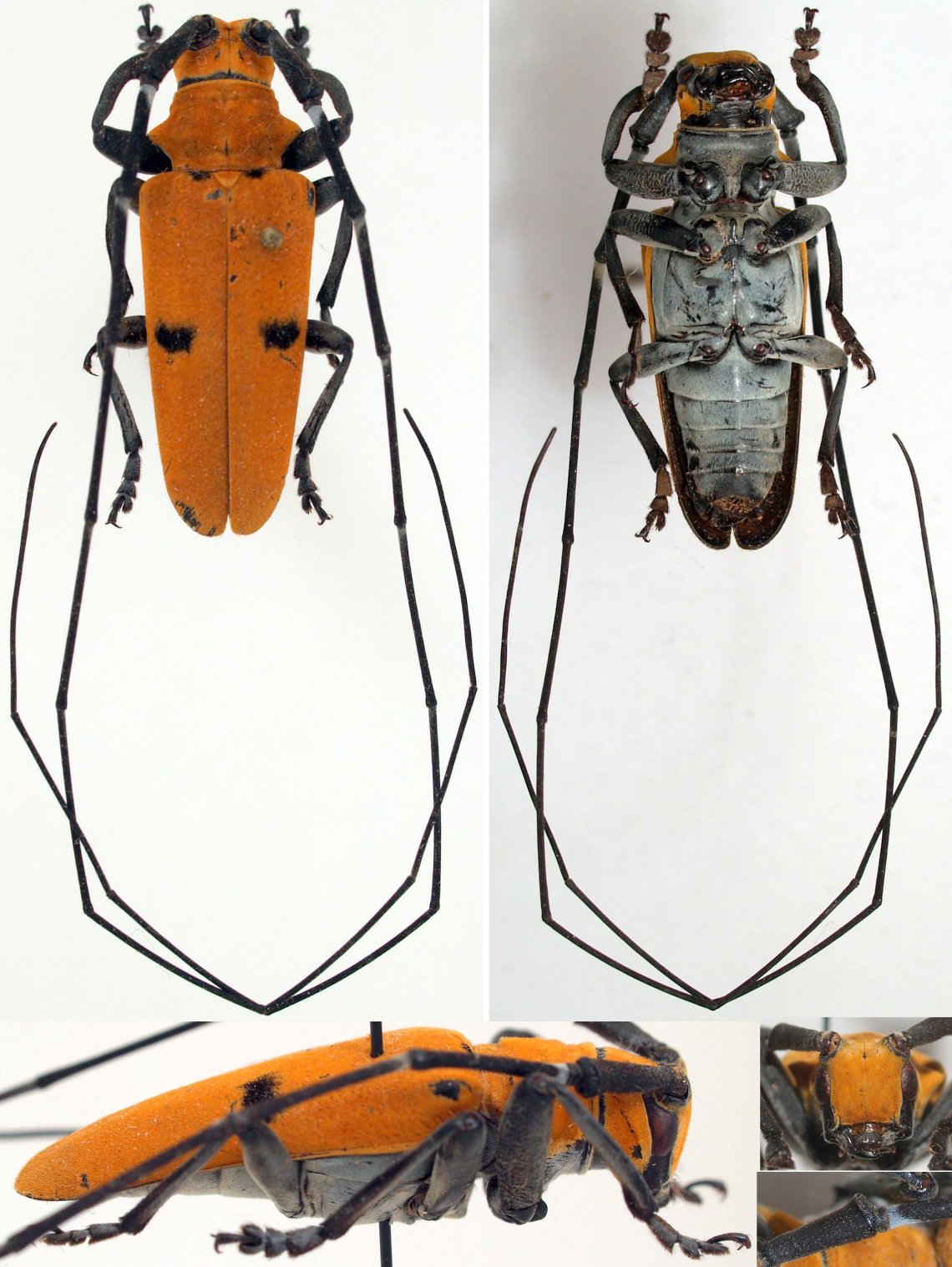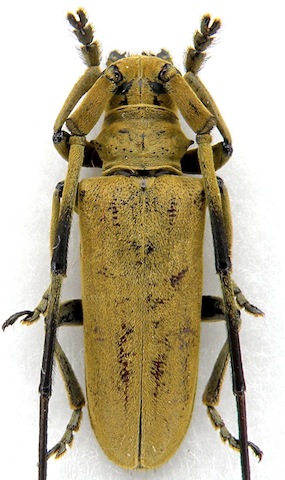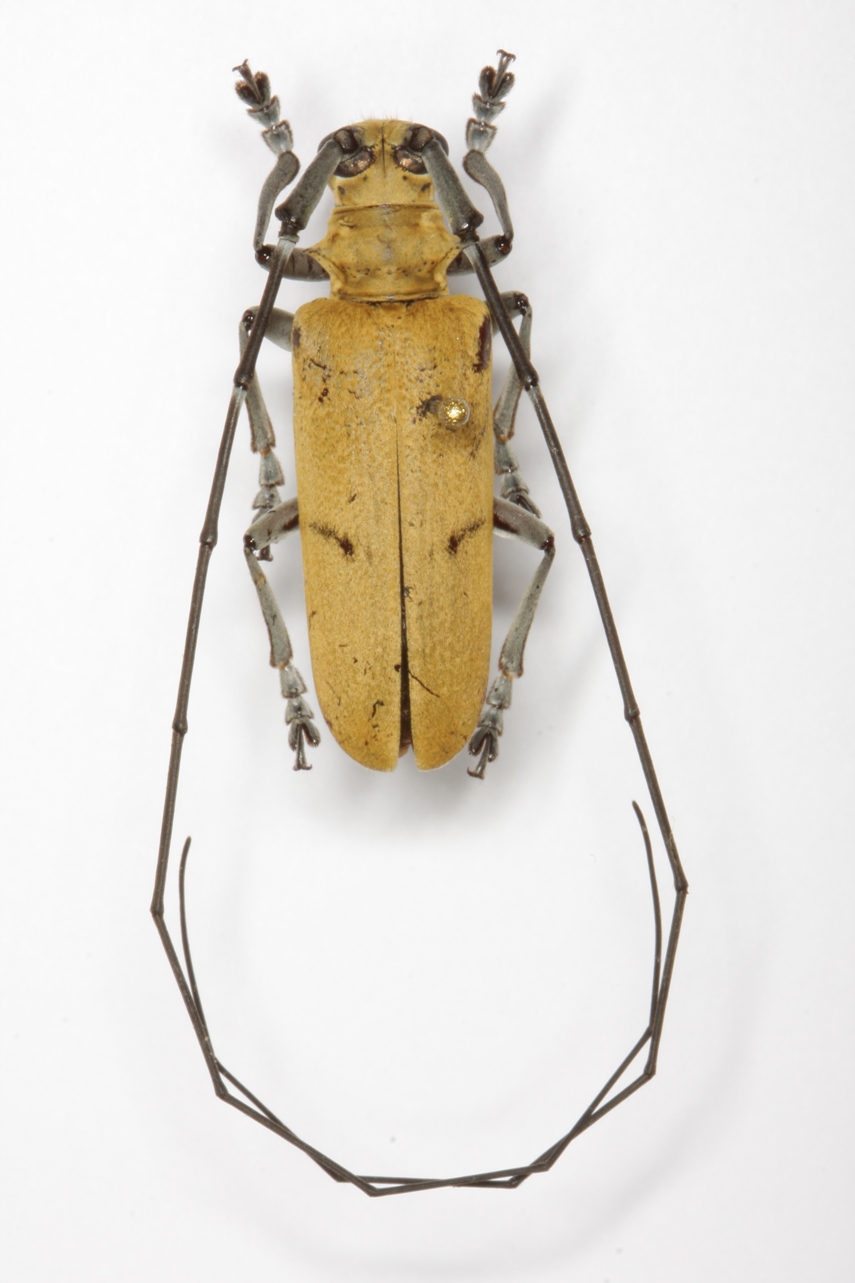| T O P I C R E V I E W |
| Gerard |
Posted - 24/02/2013 : 10:12:16

266.76 KB
MALAISIE, Cameron, Hilghlands, V.2008,
taille 26 mm
Bonjour
Il me semblait avoir déjà placé celui-ci, mais je ne l'ai pas retrouvé
La photo est refaite avec plus de détailles.
Je vous laisse me donner des infos sur cette bête, en vue d'une recherche plus poussée.
Je ne sais où chercher les cicatrices du scape me laissent perplexe. |
| 6 L A T E S T R E P L I E S (Newest First) |
| Beckey |
Posted - 30/12/2013 : 02:56:17
I appreciate Dan's opinion.
But according to these dorsal views, we can find some differences in Gerard's red one and Dan's brown one as below.
Frons : lack of setae, with setae
Scutellum : triangular, pentagonal
Elytra : broad, narrow (Ratio of the length to width of the elytra : 2.07, 2.39)
Antennae : long, short (Ratio of the antennal length to the body length : 3.6, 2.7)
Pedicle : not pubescent, pubescent
The 3rd segment of tarsi : broad, narrow (Ratio of the width to the length of 3rd segment of pro tarsi : 1.2, 0.84)
As a result, I think these are different species. |
| Beckey |
Posted - 26/02/2013 : 10:31:01
Thanks a lot! |
| dryobius |
Posted - 26/02/2013 : 04:16:41
The last image you posted is something completely different, and not Mimohammus, in my opinion... but I have no idea what it is. I see differences with the 3rd antennal segment, and the lateral protuberance on the pronotum.
I have not studied the species of West Malaysia or Sumatra, only Borneo.
My specimen of Mimohammus does have pubescence on the genae.
The specimen image which was posted at the beginning is different only by the bright orange pubescence versus the yellow-brown coloration of the type specimen and my specimen. I think the population from West Malaysia would be a new subspecies of distinct phenotype. It is very interesting.
|
| Beckey |
Posted - 24/02/2013 : 16:16:10

67.48#160;KB
Dear Dan,
Does your beetle's genae covered with pubescent or not?
My brown one from Peninsula Malaysia has brown pubescent.
According to my restricted experience, red Mimohammus is only found on Rambutan tree, on the other hand, brown one is attracted by light.
These habits are quite different from each other. |
| Gerard |
Posted - 24/02/2013 : 14:33:06
Thank you Dan a new beast for the net.
Mimohammus flavescens Aurivillius, 1911
Neue oder wenig bekannte Coleoptera Longicornia. 12
241. Mimohammus flavescens n. sp. — Brunneus, supra lanugine densa flava, infra pube grisea vestitus; genis subnudis; antennis fuscis, tenuiter griseo-pubescentibus, scapo densius griseo-vestito; articulo 3° et sequentibus ad basin anguste cinereo-annulatis; elytris prope medium striga parva transversa subobliqua fuscobrunnea ornatis; capite impunctato; pronoto ad carinam transversam punctis paucis impresso; elytris punctatis sed punctis lanugine densa fere omnino tectis.
Long. corporis 25 mm., lat. ad humeros 8 mm.
Borneo: Kuching. — Reichsmuseum in Stockholm.
Durch Grösse, Farbe und Form dem Monochamus sulphurifer Hope ähnlich, aber mit mehr zylindrischen Flügeldecken.
|
| dryobius |
Posted - 24/02/2013 : 13:45:45

272.12 KB
I think the species above is Mimohammus flavescens Aur.
Color is different, but I think that is not a big problem for me.
The attached photo which I am posting is identical to the holotype in color and all features. |
|
|


